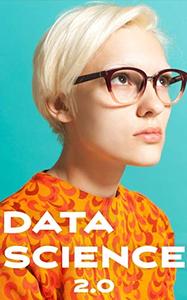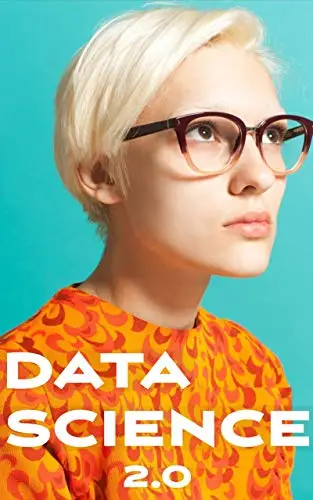Data Science 2.0 using Python 3.7 With New Arduino and Raspberry Pi 3 Projects by Narendra Mohan Mittal
English | 2019 | ISBN: N/A | ASIN: B07T8216WD | 789 pages | MOBI | 11 Mb
English | 2019 | ISBN: N/A | ASIN: B07T8216WD | 789 pages | MOBI | 11 Mb
How to Use This Book (Data Science 2.0 using Python 3.7 With New Arduino and Raspberry Pi 3 Projects)
Data science is about extracting value from data in a grounded manner where one realizes that data requires a lot of treatment and work from a lot of stakeholders before becoming valuable.
The first section of this book explains Business Intelligence and Data Science. The second section of this book explains how to use Data mining and Deep Learning in data science Applications. The third section of this book explains the complete Python 3.7 tutorial with live examples. The fourth section of this book explains how to Create Your Personal Assistant Chatbot and a Music App with Spotify using Python. The fifth section of this book explains Arduino and Raspberry Pi LED Live Projects such as SD Card Module and GPIO Module. The sixth section of this book explains how Raspberry Pi and Arduino work Together to build applications. The last section of this book explains Gradient Descent using NumPy and Python.
Table of Contents
1.Data and Data Science 2.0
2.Business Intelligence and Data Science
3.Data mining and Knowledge Discovery
4.Deep Learning and Federated Learning
5.Functional Programming
6.Python 3.7 Tutorial
7.Error Handling In Python 3.7
8.Working with Packages in Python
9.Python Automation using Tkinter
10.Python 3.7 Virtual Environment
11.Working with Descriptors in Python
12.Captcha Solver using Python
13.Code Cleaning in Python
14.Create Your Personal Assistant Chatbot
15.High-performance Computing in Python
16.Creating a Music App with Spotify using Python
17.Arduino LED Live Projects
18.Create Raspberry Pi GPIO and LED Projects
19.Building the SD Card Module in Arduino
20.Working with Raspberry Pi and Arduino Together
21.Multiprocessing in Raspberry Pi
22.Working with NumPy and Python
23.Gradient Descent using NumPy and Python
24.Working with Built-in Fixtures In Python
Data mining and Data Science
Data mining aims to extract knowledge and insight through the analysis of large amounts of data using sophisticated modeling techniques; it converts data into knowledge and actionable information.
Data mining models consist of a set of rules, equations, or complex functions that can be used to identify useful data patterns, understand, and predict behaviors. This tutorial explains the What is Data Mining with best examples and solutions.
Data mining is a process that uses a variety of data analysis methods to discover the unknown, unexpected, interesting, and relevant patterns and relationships in data that may be used to make valid and accurate predictions.
Data Science 2.0 using Python 3.7
Many have applied this law to the mushrooming advancements made in the field of data science. Data science is one of the fastest-growing academic disciplines, and its practitioners are working on increasingly sophisticated ways to find novel means to capture the data, to construct cost-effective systems to store the data and to develop algorithms that turn all those chunks of big data into valuable insights.
Ever feel as though the technology is moving at so fast a pace you can’t keep up? Then spare a thought for data scientists. They are playing a game of catch-up with technology that hasn’t even been invented. Data science, then, gives us the edge needed to answer further questions that may arise from a company’s datasets, as well as make predictions and reliable suggestions for improvement.
Creating a Music App with Spotify using Python
Spotify is a great platform for developers and provides a really nice and well-documented REST API where it's possible to make searches by artists, albums, song names, and also create and share playlists.
For the second application in this book, we are going to develop a terminal application where we can:
•Search artists
•Search albums
•Search tracks
•Play music



